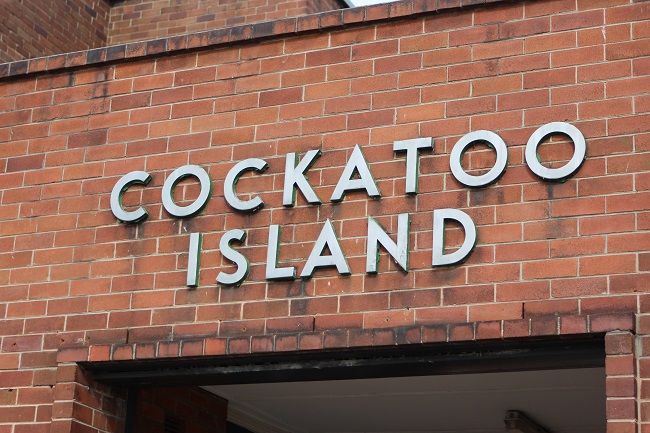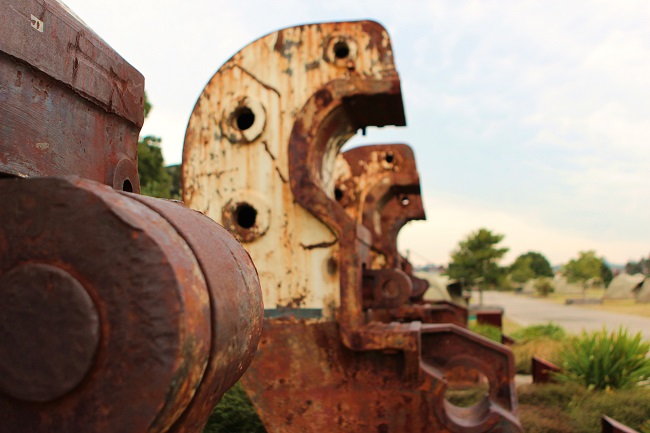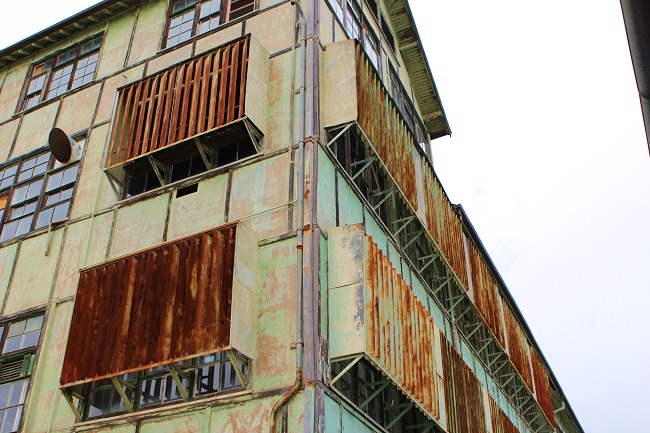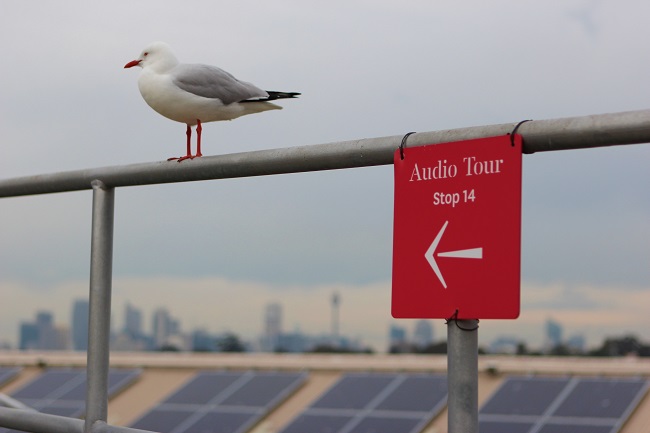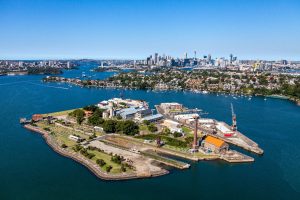Arriving in a windswept mess after a very blowy ferry ride from Circular Quay, I front up at the Cockatoo Island Visitor Centre where cheerful volunteers quickly furnish me with a map, audio tour and their personal recommendations of what to see on my wander around this harbour island.
Best known to me as home to the Biennale of Sydney, I am surprised to learn of the long and, at times, sordid history of the island. Originally called Waremah by the local Aboriginal people, in the past the island was frequented by sulphur-crested Cockatoos.
Chosen in 1839 as a the site of a new penal settlement, Cockatoo Island has undergone a number of reincarnations over the years including use as a shipyard, stone quarry, girls’ reformatory, and wartime naval building and repair centre, before being declared a UNESCO World Heritage Site in 2010.
The first stop on my tour is hard to miss, standing proudly as gatekeepers of the island ‘The Beam Benders’ were once used to mould huge sheets of metal in the shipbuilding process. Now these giant rusty clamps are more akin to sculpture than working machinery and as such they encapsulate the story of a busy working island now retired, scattered with industrial relics left to tell its tale.
In the neighbouring ship design precinct, we hear from a former cadet in naval architecture who worked on the island in the 1940s. As he recalls it was a hard, meticulous work that could also be “pretty magical” something which required a suspension of belief on my behalf as I surveyed now immobile machinery in wind-whipped corrugated sheds.
... at one point there were as many as 500 men living in quarters not much bigger than a modern family house.
A highlight for me was the convict precinct, which offers a captivating glimpse into the everyday misery of a convict. Firsthand accounts from former prison guards and inmates breathe life into the crumbling sandstone buildings, with the desperation of each inmate palpable in the cramped, dim cloisters.
It is hard for us to imagine, but at one point there were as many as 500 men living in quarters not much bigger than a modern family house. However, unlike a modern house there were no facilities and the stench created by human habitation was so overpowering that prisoners were forced to stand gripping the bars, gulping in fresh air from outside, so says my new best friend, the audio tour.
Ironically these buildings, which once housed the very worst of the worst and according to the information plaque “sent a thrill of horror through every honest member of society”, now command panoramic views of Sydney Harbour and are populated not by hardened criminals, but a lively colony of territorial seagulls.
On an island so rich in history, there are many highlights to be savoured. Coming away from the island–on an equally windy return journey–I am left with the overriding sense of the people who played a part in the Island’s past. From the convicts and their redcoat captors to the destitute girls living in the reformatory to the shipwrights working here in the early 20th century, each has left their own mark on this remarkable island.
Jump on a ferry and see it for yourself!
Rachel White. Digital Intern, M&G NSW

